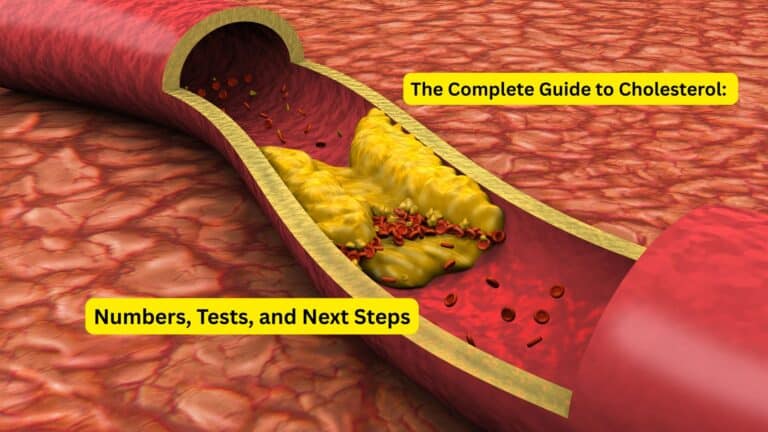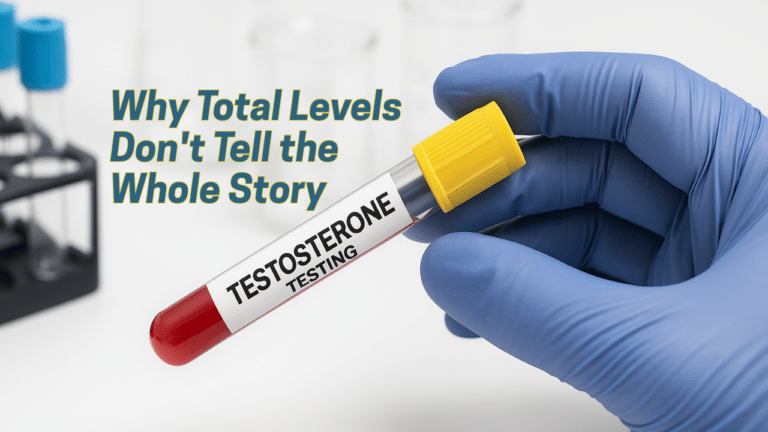Hormones serve as your body’s master regulators, orchestrating everything from growth and development to reproduction, metabolism, and aging processes throughout your entire lifespan. These powerful chemical messengers don’t remain constant—they fluctuate dramatically as you progress through different life stages, creating predictable patterns that influence your physical development, emotional well-being, and overall health. Understanding these age-related hormonal shifts empowers you to recognize normal changes, identify potential problems, and take proactive steps to maintain optimal health at every stage of life.
From the rapid growth spurts of childhood and the dramatic transformations of puberty to the gradual declines of menopause, andropause, and advanced aging, hormonal changes shape your experience of each life phase. These transitions can bring both opportunities and challenges, affecting everything from your energy levels and mood to your reproductive capacity and disease risk. By understanding what to expect at different ages, you can better prepare for these changes and work with healthcare providers to optimize your hormonal health throughout your lifetime.
Hormones in Childhood and Puberty
The early years of life represent a period of remarkable hormonal activity, with complex chemical signals driving rapid growth and development that transforms children into sexually mature adults. This phase demonstrates the profound power of hormones to reshape both body and mind in relatively short timeframes.
Early Development
Even from birth, hormones play crucial roles in regulating growth, brain development, and metabolic functions that support healthy childhood development. Growth hormone promotes physical development and bone growth, while thyroid hormones regulate metabolism and brain development. These early hormonal patterns establish the foundation for healthy development throughout childhood.
During the prepubertal years, hormone levels remain relatively stable and low compared to later life stages. However, this apparent quiet period involves important developmental processes, with hormones supporting steady growth, immune system maturation, and preparation for the dramatic changes that lie ahead during adolescence.
Puberty Surge
The onset of puberty triggers a surge in gonadotropin-releasing hormone (GnRH), follicle-stimulating hormone (FSH), luteinizing hormone (LH), estrogen, and testosterone that orchestrates sexual maturation and the final growth phases of adolescence. This hormonal cascade begins when the brain’s hypothalamus starts releasing GnRH in pulsating patterns, signaling the pituitary gland to produce FSH and LH.
These pituitary hormones then stimulate the reproductive organs—ovaries in girls and testes in boys—to produce sex hormones. Estrogen and progesterone in girls drive the development of breasts, wider hips, and the onset of menstruation, while testosterone in boys promotes deeper voice, increased muscle mass, facial hair growth, and genital development.
The timing of these changes varies significantly between individuals, with girls typically beginning puberty between ages 8 and 13, while boys start between ages 9 and 14. Growth hormone also surges during this period, creating the characteristic growth spurts that can add inches to height in relatively short periods. These dramatic hormonal changes also affect mood, cognitive development, and social behavior, explaining many of the emotional and psychological changes that accompany adolescence.
Hormones in Reproductive Years
The reproductive years represent a period of relatively stable but cyclical hormone patterns, particularly in women, where monthly fluctuations support fertility and reproductive health. For men, this period involves more consistent hormone levels that maintain reproductive capacity and overall vitality.
Women
During the reproductive years, estrogen and progesterone follow predictable monthly cycles that regulate menstruation, ovulation, and fertility. Estrogen levels rise during the first half of the menstrual cycle, promoting the thickening of the uterine lining and triggering ovulation. Following ovulation, progesterone levels increase to maintain the uterine lining and support potential pregnancy.
These cyclical changes affect more than just reproductive function—many women notice mood changes, energy fluctuations, and physical symptoms that correlate with their menstrual cycles. Estrogen influences bone density, cardiovascular health, and cognitive function, while progesterone has calming effects and supports sleep quality.
The regularity and intensity of these cycles can vary based on factors like stress, nutrition, exercise, and overall health status. Understanding these normal variations helps women recognize when changes might indicate hormonal imbalances that warrant medical evaluation.
Men
Men experience more stable hormone patterns during their reproductive years, with testosterone levels remaining relatively consistent from day to day. Testosterone maintains libido, supports muscle mass and bone density, influences mood and energy levels, and drives sperm production for fertility.
While men don’t experience the dramatic monthly fluctuations that women do, testosterone levels do follow daily rhythms, typically peaking in the morning and gradually declining throughout the day. These patterns can affect energy levels, mood, and sexual function throughout the day.
Age-related changes in male hormones begin earlier than many men realize, with testosterone levels starting to decline gradually after age 30, though this decline is usually subtle during the prime reproductive years.
Pregnancy
Pregnancy involves dramatic increases in estrogen, progesterone, and human chorionic gonadotropin (hCG) that support fetal development and prepare the maternal body for childbirth and breastfeeding. These hormonal changes begin immediately after conception and continue to escalate throughout pregnancy.
HCG, produced by the developing placenta, maintains the pregnancy during early stages and is responsible for many early pregnancy symptoms like morning sickness. Estrogen levels increase dramatically, reaching levels 100 times higher than normal by the third trimester, while progesterone rises to maintain the pregnancy and prevent premature labor.
Additional hormones like relaxin help prepare the body for childbirth by loosening ligaments and joints, while prolactin increases in preparation for breastfeeding. These profound hormonal changes affect virtually every body system, influencing everything from cardiovascular function and immune responses to mood and cognitive function.
Hormones in Midlife: Menopause and Andropause
Midlife brings significant hormonal transitions that mark the end of reproductive capacity and the beginning of new health considerations. These changes, while natural, can significantly impact quality of life and require thoughtful management to maintain optimal health.
Menopause in Women
The decline in estrogen and progesterone during menopause leads to hot flashes, mood changes, and bone loss, representing one of the most dramatic hormonal transitions in a woman’s life. Menopause typically occurs around age 51, though the transition often begins several years earlier during perimenopause.
During perimenopause, hormone levels begin fluctuating unpredictably, causing irregular menstrual cycles, mood swings, and early menopausal symptoms. As ovarian function declines, estrogen and progesterone levels drop significantly, eventually reaching levels too low to support menstruation.
The symptoms of menopause extend far beyond the commonly known hot flashes. Many women experience sleep disturbances, mood changes, cognitive difficulties often called “brain fog,” vaginal dryness, reduced libido, and changes in body composition. The loss of estrogen’s protective effects also increases risks for osteoporosis and cardiovascular disease.
Recent research has brought renewed attention to menopause as a significant health transition that deserves medical attention and support. This shift in perspective has led to better treatment options and increased recognition of how hormonal changes during menopause affect overall health and quality of life.
Andropause in Men
Testosterone decline in men occurs at approximately 1% per year after age 30, creating a gradual transition often called andropause or “male menopause.” Unlike the relatively rapid changes of female menopause, male hormonal decline is typically more gradual and variable between individuals.
The symptoms of declining testosterone can include reduced libido, erectile dysfunction, decreased muscle mass and strength, increased body fat (particularly around the midsection), mood changes including irritability and depression, fatigue, and reduced cognitive function. Some men also experience hot flashes, though these are less common than in women.
The gradual nature of male hormonal decline means that symptoms often develop slowly and may be attributed to normal aging, stress, or other health conditions. This can lead to underdiagnosis and delayed treatment of clinically significant testosterone deficiency.
Not all men experience problematic symptoms from age-related testosterone decline, and individual responses vary significantly. However, for those who do experience bothersome symptoms, modern hormone replacement options can provide significant improvements in quality of life and overall health.
Hormones and Aging Beyond 60
Advanced aging brings additional hormonal changes that affect multiple body systems, influencing everything from metabolism and immune function to cognitive health and physical resilience. Understanding these changes helps explain many age-related health issues and guides preventive care strategies.
Glandular Decline
Aging involves functional decline of major endocrine glands including the thyroid, adrenal glands, and pituitary gland, reducing overall hormone production and disrupting the coordinated rhythms that maintain optimal health. The pituitary gland, often called the “master gland,” becomes less responsive to signals from the hypothalamus, reducing its ability to regulate other endocrine glands effectively.
Thyroid function often declines with age, leading to slower metabolism, reduced energy, and difficulty regulating body temperature. The adrenal glands may produce less cortisol and other stress hormones, affecting the body’s ability to respond to stress and maintain blood pressure regulation.
Growth hormone production decreases significantly with age, contributing to reduced muscle mass, increased body fat, decreased bone density, and slower wound healing. This decline in growth hormone is one of the factors contributing to the physical changes associated with aging, including reduced strength and vitality.
Metabolism & Immunity
Reduced hormone production and altered hormone rhythms significantly affect metabolic processes and immune system function in older adults. Insulin sensitivity often decreases with age, making blood sugar regulation more challenging and increasing diabetes risk. Thyroid hormone changes can slow metabolism, making weight management more difficult.
The immune system becomes less efficient with age, partly due to hormonal changes that affect immune cell function and communication. This immunosenescence contributes to increased susceptibility to infections, reduced vaccine effectiveness, and higher risks for age-related diseases.
Sleep patterns often change with age, partly due to alterations in melatonin production and circadian rhythm disruption. These changes can affect recovery, cognitive function, and overall quality of life.
Emerging Research
Current research explores the complex interactions between the gut microbiome and hormone regulation during aging, revealing new understanding of how these systems influence metabolic and immune health. The gut microbiome appears to play important roles in hormone metabolism and may influence age-related hormonal changes.
Scientists are investigating how lifestyle interventions, including diet modifications, exercise programs, and stress management techniques, can support healthy hormonal aging. This research focuses on identifying safe and effective approaches to optimize hormone function without the risks associated with hormone replacement therapies.
Emerging therapies being studied include targeted hormone replacement approaches, supplements that support natural hormone production, and interventions that address the underlying cellular and molecular changes that contribute to age-related hormonal decline.
FAQs
What hormonal changes occur during puberty?
Puberty involves a surge in gonadotropin-releasing hormone (GnRH), follicle-stimulating hormone (FSH), luteinizing hormone (LH), and sex steroids including estrogen, progesterone, and testosterone. These hormonal changes trigger sexual maturation, growth spurts, and the development of secondary sexual characteristics in both boys and girls.
How do hormones change during pregnancy?
Pregnancy involves dramatic increases in estrogen, progesterone, and human chorionic gonadotropin (hCG) that support fetal development and prepare the mother’s body for childbirth. These hormone levels can increase 100-fold or more compared to non-pregnant levels, affecting virtually every body system.
What happens hormonally during menopause?
Menopause involves a significant decline in estrogen and progesterone production by the ovaries, leading to the cessation of menstruation and various symptoms including hot flashes, mood changes, sleep disturbances, and increased risks for bone loss and cardiovascular disease.
What is andropause?
Andropause refers to the gradual decline in testosterone levels that occurs in aging men, typically beginning around age 30 and continuing throughout life. This decline can cause reduced libido, muscle mass loss, mood changes, and decreased energy levels, though symptoms vary significantly between individuals.
How does aging affect hormone production overall?
Aging involves a general decline in the function of major endocrine glands, leading to reduced hormone production and altered hormone rhythms. This affects metabolism, immune function, cognition, sleep patterns, and physical resilience, contributing to many age-related health changes.
Conclusion
Understanding how age affects your hormones throughout life provides valuable context for the physical and emotional changes you experience at different life stages. From the dramatic surges of puberty and pregnancy to the gradual declines of menopause, andropause, and advanced aging, hormonal transitions are natural parts of human development that significantly influence your health and well-being.
These predictable patterns help explain why certain symptoms occur at specific ages and why healthcare needs change throughout life. Recognizing normal age-related hormonal changes allows you to distinguish between expected transitions and potential health problems that require medical attention.
Modern hormone testing provides unprecedented insights into your individual hormonal status, allowing for personalized approaches to managing age-related changes. Whether you’re navigating the challenges of adolescence, planning for pregnancy, managing midlife transitions, or optimizing health in later years, understanding your hormonal profile guides informed decisions about treatment and prevention strategies.
Order a comprehensive hormone panel with Walk-In Lab today to monitor your levels and stay ahead of age-related hormonal changes. Taking a proactive approach to hormonal health helps you maintain vitality, prevent complications, and optimize your quality of life at every stage of your journey.
This content is for educational purposes only and is not a substitute for professional medical advice, diagnosis, or treatment. Always consult with qualified healthcare providers regarding questions about medical conditions and treatment options.






